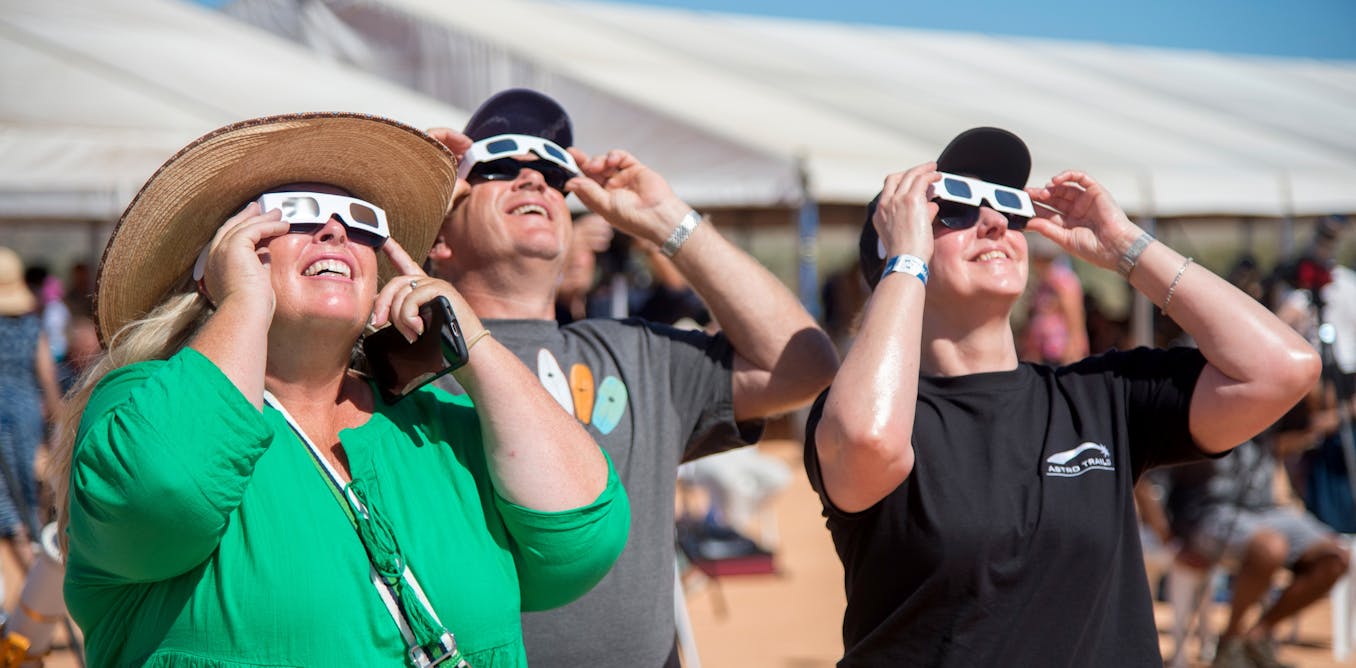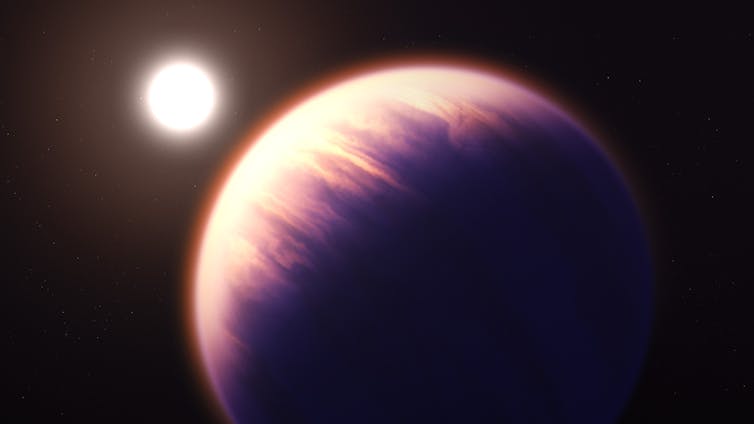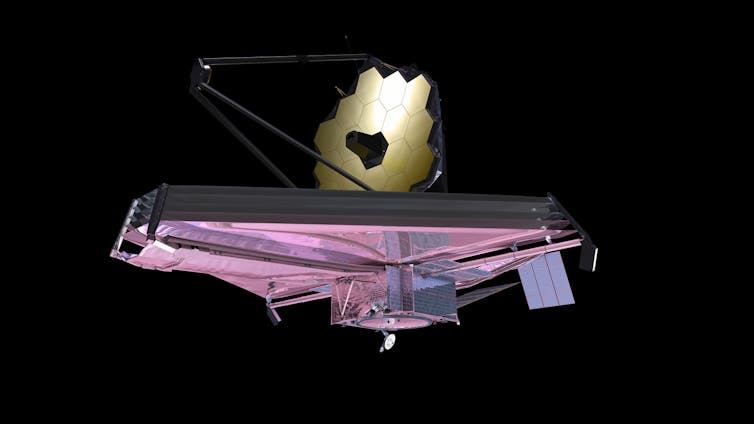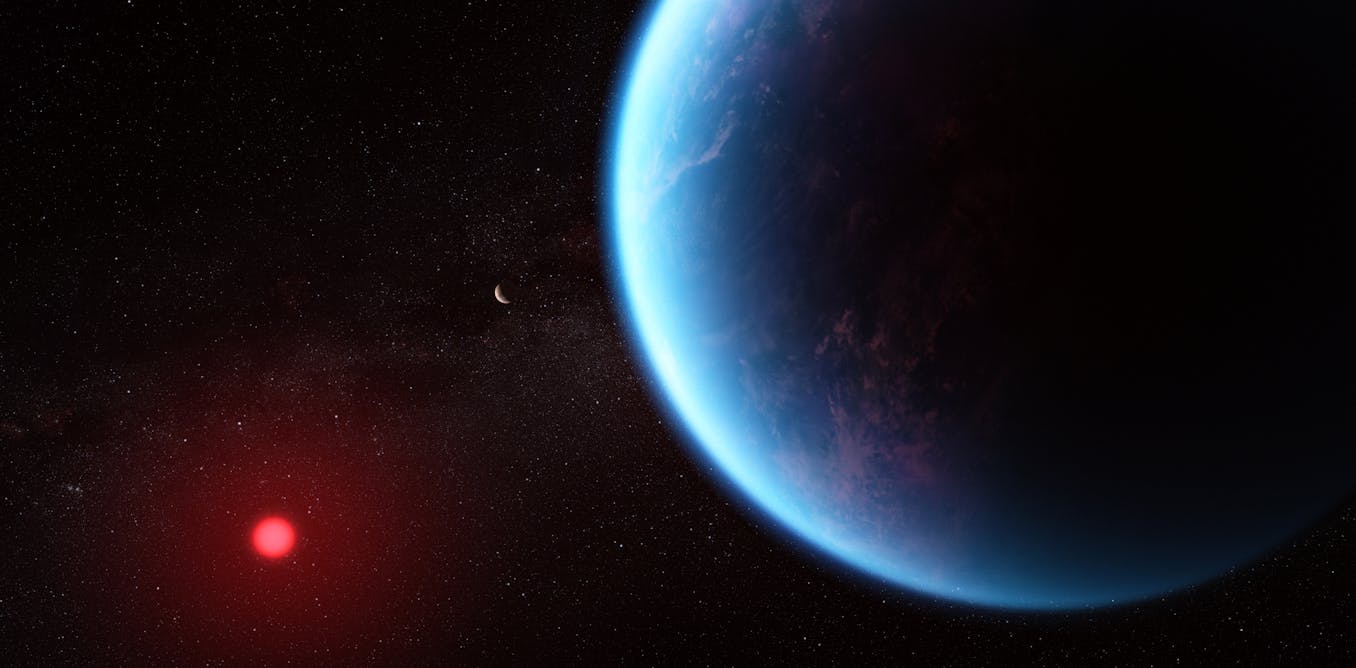
Eclipses aren’t just visual spectacles, they are at the heart of scientific efforts to understand distant planets
A type of eclipse is crucial for measuring what’s in the atmospheres of planets orbiting distant stars.
April 8, 2024 • 6 min • Source
The total solar eclipse across North America on April 8 2024 is a stunning and memorable event for everyone in its path. However, eclipses are not just valued for their visual impact, they are at the heart of cutting-edge science.
Eclipses can tell us a vast amount about distant planets beyond our Solar System – or exoplanets. Since the first exoplanet was detected in 1992, astronomers have discovered more than 5,600 worlds orbiting stars other than the Sun. They have used a variety of powerful telescopes to observe them.
However, as with the total solar eclipse, there is still a vital role to be played by amateur astronomers, through several citizen science projects designed to assist with observations of these distant worlds.
A solar eclipse occurs when the Moon passes between the Earth and the Sun. Although the Sun is 400 times bigger than the Moon, it is also about 400 times farther away. This is why it appears to be the same size in our sky. When an eclipse occurs, the Moon barely blocks out the Sun, leaving a beautiful feature called the “corona” (Latin for crown) around the edge.
Something similar happens when we look towards a distant star with a planet. If everything lines up just right, the exoplanet will pass between us and its star. This is called a transit. However, because the planet is much smaller than its star, and they’re much closer to each other than they are to us, the planet will appear to be smaller than the star and won’t block it out as happens with a total solar eclipse.
These stars are so distant, even with our best telescopes, they appear as a tiny point of light. When a transit occurs, that little point of light gets a fraction dimmer for a few hours, then returns to normal.
If the exoplanet has an atmosphere, some starlight will be filtered through it before reaching the telescope. The starlight can be split into different colours, which tells you about what’s in the atmosphere. This is called a spectrum.

Each element has a specific set of colours it prefers to absorb and emit. For instance, older street lamps had a distinctive orange colour, which is characteristic of sodium – the metal those lamps were filled with. If we split the light from the street lamp into a spectrum, we would see the sodium signature.
In the same way, chemical compounds in the planet’s atmosphere imprint their signatures onto the starlight filtered through them. This allows astronomers to measure what’s in the atmosphere by examining its spectrum.
The Earth’s atmosphere scatters blue light, making the sky appear blue, and what’s left looks red. The leftover red light is responsible for the Sun looking red as it rises and sets and for the “blood Moon” effect, where the Moon turns orange-red during a lunar eclipse (where the Earth passes between the Sun and Moon). If we were on the Moon during such an event, we could use the spectrum technique to measure the Earth’s atmosphere.
Nasa’s James Webb Space Telescope (JWST) and the European Space Agency’s (Esa) upcoming Ariel space telescope are among the only instruments sensitive enough to detect and measure the atmosphere of an exoplanet.
Characterising and comparing those atmospheres can tell us lots about other planetary systems. Until the 1990s, we only had one example – the Solar System. Astronomers will also be on the lookout for “biomarkers” in the atmospheres of those planets.
Biomarkers are the potential chemical signatures of life. For example, oxygen makes up just over 20% of Earth’s atmosphere and is produced by plants. By studying potential biomarkers in exoplanet atmospheres, astronomers might just turn up evidence for alien life.
There is likely to be debate about some of these results, however. Last year, a team of astronomers announced tentative hints of a chemical called dimethyl sulphide in the spectrum from an exoplanet called K2-18b. On Earth, this chemical is emitted by marine plankton. However, many astronomers are waiting for follow-up observations of this planet before drawing any conclusions.

A remaining challenge around the study of exoplanets is the uncertainty in the timing of the eclipses, or transits. Interactions with other planets and other effects can cause an exoplanet’s orbit to change over time. If a transit is late, this might leave spacecraft like JWST or Ariel waiting for it to happen, wasting very limited telescope observing time. If a transit happens early, the space telescope may miss it entirely.
Exoplanet Watch and ExoClock are citizen science projects allowing members of the public to contribute to the study of exoplanets. Participants can use small telescopes they have at home, or remotely control other telescopes via the internet to observe transits, then process the results on their computers. By uploading these results, they can help keep JWST and Ariel punctual, placing them in a position to make the observations that can transform our understanding of the cosmos.
Oisin Creaner receives funding from the National Open Research Forum (NORF) Open Research Fund 2023, Strand II: Open Research Stimulus Call 2023. This funding is provided through the Higher Education Authority (HEA) and through Science Foundation Ireland through the SFI Centre for Research Training in Machine Learning (Grant No. 18/CRT/6183). He is the secretary of the Astronomical Society of Ireland, a member of the Computational Physics Group of the Institute of Physics and the National Astronomy Education Coordinator team for Ireland in the International Astronomical Union.


